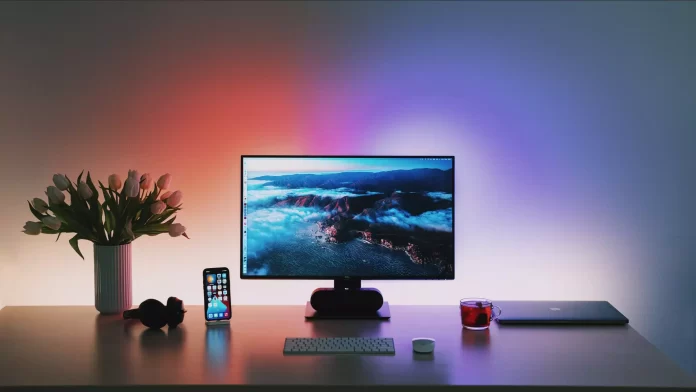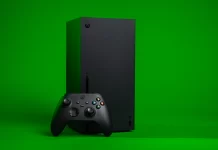As technology is rapidly advancing today, many users sometimes wonder what they need to do to keep up with it. The brilliance of today’s graphics processors often overshadows the fact that a monitor with the appropriate refresh rate is also key to high-quality graphics. Modern monitors come with a lot of features and parameters which help users narrow down their choices to specific models. Screen diagonal, matrix type, brightness, contrast, response. However, there’s a parameter that instantly hangs the label “gaming” to any monitor – the screen refresh rate.
Screen refresh rate is a characteristic that means the maximum number of frames per second that the monitor can display. The higher the screen frequency, the smoother and more dynamic the image. Let’s look at the difference between the various monitor refresh rates, whether you should still use monitors with 60 Hz for gaming, and find out what refresh rate is best for gaming.
Why is screen refresh rate important?
Games and other moving images are shown on the display when the graphics card sends still images in quick succession. If the card is powerful, the images will be sent faster. In order to enjoy smooth video card playback, make sure it matches the game you are going to play.
It’s especially important for a gamer to have a great monitor that can keep up with the graphics processor. Otherwise, the graphics card will unnecessarily create frames that the monitor can’t display. The more unnecessary overloading of the graphics processor can lead to its overheating and other problems.
Standard monitors have a frequency of 60 Hz, but there are monitors and TVs with higher frequencies – 144 Hz, 240 Hz, and even 360 Hz. Hertz (Hz) is the number of images that are displayed per second as the monitor updates. The higher their number, the more spectacular and detailed the picture will look on the display. This parameter is very important for games because this process is characterized by a constant change of frame. Let’s compare different refresh rates and see how it affects the picture.
Read Also:
- How does a TV with a 60 Hz refresh rate show a 120 Hz game console video
- Does 120 Hz TV worth it?
- How to fix: PC doesn’t connect to TV via HDMI
What is the difference between 60 Hz and 144 Hz monitors?
Different monitors, and different manufacturers, just like different Samsung TVs, support different refresh rates you want probably to know. The main reason many people still use a 60 Hz monitor is probably due to limited budgets. As far as technology is concerned, it’s the oldest and most well-established refresh rate technology. However, it’s already going out of fashion.
Why can’t people who used to use a 144 Hz or higher monitor go back to 60 Hz? The fact is that everything from the mouse cursor on the desktop to heavy gaming felt sluggish after upgrading to 144 Hz. If you still like a 60Hz monitor, don’t try another one with a higher refresh rate, at least not until you have the money to upgrade.
Dynamic games are usually chosen for testing because that’s where the difference is very noticeable. As mentioned above, by far the only good reason why you would settle for a 60Hz monitor is on a limited budget. Unless you play video games where frame rate plays an important role, you have nothing to worry about.
Games such as Civilization 6 look great on a 60 Hz display. However, if you play shooters, the picture will be worse than on a 144 Hz screen. This is because the FPS in games like this depends on your ability to instantly see other players and react to them quickly. If you only see half or even a quarter of the frames your opponent sees, then you won’t be successful in such a game.
The 60Hz setting has an end-to-end lag of 55 to 75 ms (in full-screen mode), and the 144Hz setting is 30 to 45 ms. In practice, this means that a setting with more frames per second and an accompanying higher monitor refresh rate can generate a higher response rate.
Is it worth buying monitors with a high refresh rate?
If you do not play video games, then buying a monitor with a frame rate higher than 60 Hz is probably not worth it for you. There are few non-game-related apps where a higher frame rate will make a noticeable difference. If you want to upgrade your monitor, it’s better to spend that money on a larger monitor with a higher resolution or better image quality.
For gamers, high refresh rate monitors are a noticeable upgrade, especially if you play fast-paced games like shooters. Going from 60FPS to 144HZ isn’t as important as going from 30FPs to 60FPS, but there’s still a difference.
60FPS is a decent standard – if your PC can’t reach that rate, you should upgrade your graphics card (and possibly other components, like your CPU) first. Sometimes you’ll maybe need to overlock your GPU.
If you’re happy with your current frame rate, you might be better off spending the money to upgrade your monitor’s resolution, size, etc.
What is the difference between 144Hz and 240Hz?
For a long time for gaming battles, a screen refresh rate of 144 Hz has been the minimum requirement. However, the current trend is to use much more – 240 Hz. One of the main reasons why not all users have started using a 240Hz monitor is that the difference between the two isn’t as drastic as it would be if they went from 60Hz to 144Hz. Recently, more and more professional eSports players are switching to a 240Hz screen. Perhaps over time, this will become the new minimum.
If you’re looking to upgrade your gaming monitor, you should definitely go straight to 240Hz and skip the 144Hz option. However, if you’re looking for competitive advantage with 144 Hz, you can wait a bit and go straight to 360 Hz. Of course, all this only makes sense if you have equipment that can support that frame rate.
Read Also:
- How to fix PUBG is lagging on Windows 10
- How to fix PC game is lagging
- Does it worth pre-order new Steam Deck?
What is the best frequency for video games?
The answer is 360 Hz. However, which one should you choose? The choice will be determined by what kind of games you play and what you want to get out of your gaming experience. If you like simulation games at a leisurely pace, 60Hz games are perfect for you. You can invest the money you save in a memory or processor upgrade.
If you’re a casual multiplayer gamer, the monitor should be at 144 Hz. By playing at 144 Hz, you won’t feel like your equipment is limiting you, as it might have been in a 60 Hz situation. Monitors at 240 Hz are essential if you want to get into any part of the professional gaming world.
Monitors with a 360 Hz refresh rate are a great choice for those who want to get the most out of their game and dominate their opponent. In addition, these monitors use modern technologies: G-Sync, DLSS, and Reflex. They guarantee maximum frame rate, reduce system delays, and the picture is smooth as a result of which the game is enjoyable.







I’ve been using a monitor with a 60 Hz refresh rate for years now and I can tell you that it’s definitely not the best option. I switched to a monitor with a 120 Hz refresh rate and my eyes have never felt so good. If you’re thinking about switching to a monitor with a higher refresh rate, I highly recommend doing it!